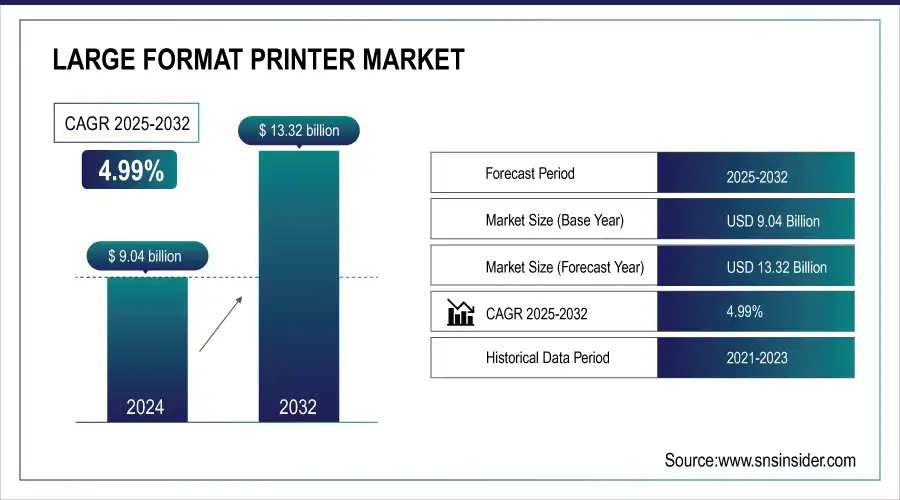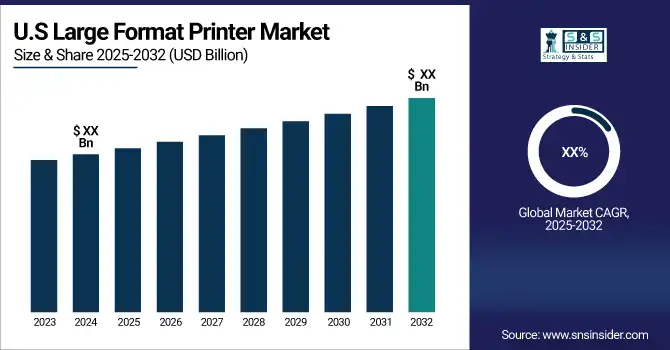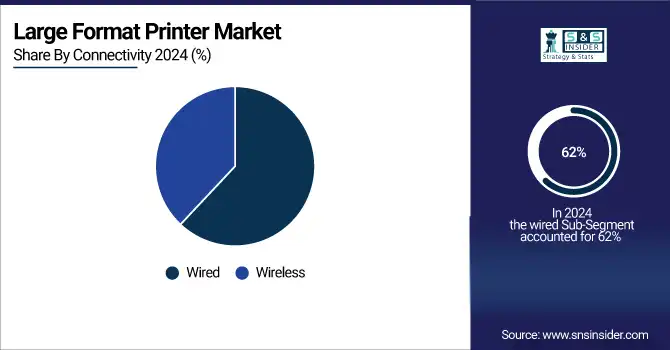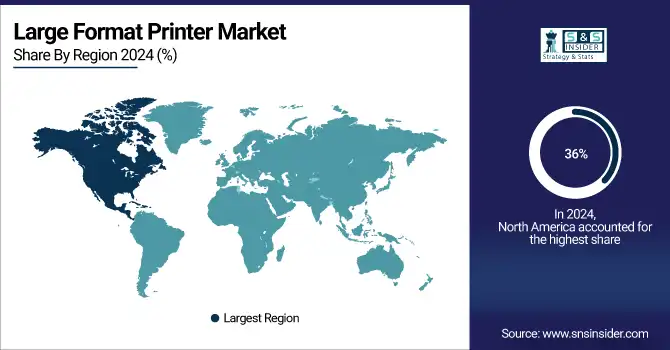Large Format Printer Market Size Analysis:
The Large Format Printer Market Size was valued at USD 9.04 Billion in 2024 and is expected to reach USD 13.32 Billion, at a CAGR of 4.99% by 2025-2032. There is strong potential for growth in the large format printer market, fueled by a rising need for top-notch printing options in industries such as advertising, photography, and exhibitions. As online marketing grows, banner advertising in the US is expected to increase significantly, making large format printing more important. It is projected that the banner advertising industry will grow by 19.5 billion U.S. dollars (+31.1 percent) between 2023 and 2028, reaching an anticipated high of 82.19 billion U.S. dollars by 2028. This increase in advertising expenditures is indicative of a general shift towards visually impactful marketing, highlighting the importance of large format printers for companies aiming to produce attention-grabbing banners, signs, and promotional materials. The market growth will be propelled even more as photographers and studios aim to take advantage of the features of high-resolution digital cameras with the help of large format printers.

Get more information on Large Format Printer Market - Request Sample Report
Key Large Format Printer Market Trends:
-
Rising adoption of UV-curable inks in large format printers for outdoor advertising, CAD, and technical printing due to faster drying and superior color quality.
-
Increasing use of large format printers in textile industry for bespoke and on-demand fashion solutions.
-
Growth in high-resolution and visually striking advertising prints such as banners, posters, and signage.
-
Expansion of personalized printing services by companies like Vistaprint, enhancing brand presence and promotional activities.
-
Rising demand for eco-friendly and customized packaging solutions, leveraging large format printing for competitive advantage in retail.

Large Format Printer Market Growth Drivers:
-
UV-curable inks are becoming more popular in outdoor advertising, computer-aided design (CAD), and technical printing applications.
Growth in Demand for UV-curable ink will drive the Large Format Printer Market Compared to traditional solvent and aqueous inks, especially for outdoor advertising, CAD, and technical printing applications these inks have specific advantages. The UV-curable inks immediately dry when they come in contact with ultra-violet light, which makes them dry enough to handle and helps with production efficiency. The quick curing also outputs maximum colors with the full expected color gamut, bundled they are just suitable for high-quality prints in direct exposure to outdoor elements, such as UV exposure, humidity, and temperature fluctuations. So businesses in the outdoor advertising market have switched to UV-curable ink technology large format printers to produce more visually stimulating designs for banners, billboards, and vehicle wraps which would still look good after several months. When it comes to CAD and technical printing applications, UV-curable inks can produce precise and detailed prints on everything from rigid materials (e.g. acrylic, metal) to those more rounded or structured.
-
Large format printers are in high demand in the textile, advertising, and packaging industries.
Large format printers are predominantly used in textile, advertising and packaging industries owing to the significant role these applications play. These printers also allow the creation of intricate, brilliant prints on a spectrum of fabrics within textile industry, amid a rise in bespoke and on-demand fashion solutions. An example of this include businesses like Printful that use large format printers to produce custom clothing and home goods making it possible for customers to choose designs they love and can relate to, thereby setting them apart from the rest. Large format printers are essential in rendering advertising banners, posters, and signage that successfully need to be noticed by consumers from the advertising world. As businesses have begun to appreciate sourcing high-resolution print materials, the demand for 6 desired prints is also on the rise. Vistaprint, on the other hand, uses wide format print technology to provide personalized promotional items that enable companies to increase their presence and grow their brand.
Large Format Printer Market Restraints:
-
Digital advertising media is becoming increasingly popular.
A major factor hampering Large Format Printer Market growth is the rise of digital media in advertising. The demand for traditional printing solutions is on the decline, as many businesses turn their attention more and more toward digital platforms for marketing and promotion. Its numerous benefits, such as real-time analytics, targeted advertising, and cost efficiency make digital advertising a popular choice for companies that want to get the most out of their marketing budgets. One example is the retail industry, which has adopted digital marketing technologies like social media and mobile advertising for a more interactive and personalized way to engage consumers. Brands can change their messages based on consumer behavior, trends, and feedback, unlike static printed materials in digital format.
Large Format Printer Market Segment Analysis:
By Ink Type
Solvent inks led the market with a 37% market share in 2024, because of their versatility and durability. These pigmented inks, consisting of a solvent suspension, are ideal for use outdoors on materials such as vinyl, canvas, and banner media. These signs and promotional displays come in bright colors and are durable against water and UV exposure, making them perfect for advertising. Mimaki and Epson use solvent inks in their printers to meet the needs of businesses that need top-notch graphics for things like vehicle wraps and outdoor banners.
The UV-cured is considered as the fastest-growing segment during 2025-2032 in the market for large format printers, due to technological progress and the growing need for durable, high-quality prints. UV inks are dried instantly by ultraviolet light, speeding up production and minimizing wait times. This section is especially attractive to businesses looking for eco-friendly options since UV inks release fewer volatile organic compounds (VOCs) than conventional inks. Companies such as HP and Roland DG have integrated UV-cured inks into their printer models to cater to the needs of commercial printers and graphic designers for signage, packaging, and industrial prints.
By Material
The porous segment held a market share of 58% and led the market in 2024. This sector is seeing a notable boom because of the growing need for top-notch visuals and prints in fields like fashion, interior design, and event promotions. Porous materials enable improved ink absorption, resulting in vivid colors and enhanced image quality, essential for banners, wallpapers, and backdrops. Epson and Roland are leading the way in this market by offering printers that are specifically tailored for textiles and other porous materials.
The non-porous segment is expected to register the fastest CAGR during 2025-2032. This section is becoming popular because of its flexibility and strength, perfect for outdoor uses, signs, and wrapping vehicles. Items that do not allow water or UV rays to pass through them will help keep printed materials in good condition for an extended period. The rising popularity of digital signage and promotional displays in retail settings continues to drive growth in this sector. HP and Mimaki are among the top companies in this field, exemplified by HP's dominant Latex series.
By Connectivity
The wired segment with a 62% market share, dominated the market in 2024 because of its dependable performance, efficiency, and high-caliber results. Wired printers rely on Ethernet or USB connections to ensure reliable data transfer, essential for printing large files in professional fields such as graphic design and architecture. Wired connections' durability reduces latency and interference, making them ideal for precise environments like print shops and advertising agencies. An example is HP's DesignJet printers, which are commonly preferred in the field for their superb color accuracy and precision, making them suitable for technical drawings and top-notch prints.
The wireless segment is accounted to have the fastest CAGR during 2025-2032, due to the growing need for mobility and convenience. Wireless printers enable users to connect through Wi-Fi, Bluetooth, or cloud services, allowing for remote printing and the ease of printing from various devices without the need for cables. This adaptability is particularly attractive to businesses that value teamwork and productivity, like marketing agencies and creative studios. Epson and other companies are addressing this trend with products like the SureColor series, which comes equipped with wireless features that enable users to print from their smartphones and tablets.

North America Large Format Printer Market Insights
North America dominated in 2024 with a 36% market share due to its advanced technologies and substantial investments in printing solutions. Major companies like Epson, Canon, and HP are located in the area, which helps support a strong supply chain and unique product offerings. The market growth is driven by the increasing need for top-notch graphics in sectors such as advertising, textiles, and architecture. Moreover, the increase in usage of digital printing technologies improves the benefits provided by large format printers, which are crucial for companies looking to develop powerful visual messages.

Get Customized Report as per your Business Requirement - Request For Customized Report
Asia Pacific Large Format Printer Market Insights
The APAC region is going to become the fastest-growing market during 2025-2032, due to fast industrialization, urbanization, and an increasing focus on top-notch printing options. Nations such as China, India, and Japan are experiencing an increase in the need for big-size printers in different industries like advertising, textiles, and manufacturing. Companies like Ricoh, Mimaki, and Roland DG are taking advantage of this expansion by providing creative and varied printing options customized for specific regions. Moreover, the growth in popularity of digital printing technology boosts efficiency and personalization, attracting companies aiming to improve their marketing and branding strategies.
Europe Large Format Printer Market Insights
The Europe Large Format Printer Market is growing due to increasing demand for high-resolution, durable, and customizable prints across advertising, packaging, and textile industries. Adoption of UV-curable and eco-friendly inks, coupled with advancements in digital and hybrid printing technologies, is driving market expansion. Businesses are leveraging large format printers for banners, signage, promotional items, and bespoke fashion solutions, while government initiatives and sustainability trends further support widespread adoption across the region.
Latin America (LATAM) and Middle East & Africa (MEA) Large Format Printer Market Insights
The LATAM and MEA Large Format Printer markets are expanding due to rising demand for high-quality, durable, and visually appealing prints in advertising, packaging, and textile sectors. Adoption of UV-curable and eco-friendly inks, along with digital and hybrid printing technologies, is increasing. Growing infrastructure development, promotional activities, and customized printing requirements, coupled with investments in modern printing solutions, are driving market growth across both regions.
Key Large Format Printer Companies are:
-
Fujifilm Holdings Corporation
-
Hewlett-Packard (HP)
-
Xerox Corporation
-
Kyocera Corporation
-
Roland Corporation
-
Mutoh
-
ARC Document Solutions
-
GFA-GEVAERT
-
Mimaki Engineering
-
Lexmark
-
Agfa-Gevaert
-
Durst Phototechnik
-
DILLI Illustrate
-
SwissQprint
-
Canon Inc.
-
Ricoh
-
Brother Industries
-
Seiko Instruments
Competitive Landscape for Large Format Printer Market:
Canon Inc., a global leader in imaging and printing solutions, offers advanced large format printers, including UV and inkjet technologies. The company serves advertising, packaging, and textile industries, delivering high-resolution, durable, and customizable printing solutions for commercial and industrial applications.
-
April 2023: Canon introduced this 24-inch large-format printer featuring a built-in flatbed scanner, designed for educational settings and small businesses. Its compact design allows for easy placement in tight spaces, and it supports direct printing from USB without needing a computer.
| Report Attributes | Details |
|---|---|
| Market Size in 2024 | USD 9.04 Billion |
| Market Size by 2032 | USD 13.32 Billion |
| CAGR | CAGR of 4.99% From 2025 to 2032 |
| Base Year | 2024 |
| Forecast Period | 2025-2032 |
| Historical Data | 2021-2023 |
| Report Scope & Coverage | Market Size, Segments Analysis, Competitive Landscape, Regional Analysis, DROC & SWOT Analysis, Forecast Outlook |
| Key Segments | • By Ink Type (Solvent, Aqueous, UV Cured, Dye Sublimation, Latex) • By Material (Porous, Non-porous) • By Connectivity (Wired, Wireless) • By Technology (Ink-Based, Toner-Based) • By Print Width (17”-24”, 24”-36”, 36”-44”, 44”-60”, 60”-72”, 72” and above) • By Application (Décor, Apparel and Textile, Signage and Advertising, CAD and Technical Printing, Others) |
| Regional Analysis/Coverage | North America (US, Canada, Mexico), Europe (Germany, France, UK, Italy, Spain, Poland, Turkey, Rest of Europe), Asia Pacific (China, India, Japan, South Korea, Singapore, Australia, Taiwan, Rest of Asia Pacific), Middle East & Africa (UAE, Saudi Arabia, Qatar, South Africa, Rest of Middle East & Africa), Latin America (Brazil, Argentina, Rest of Latin America) |
| Company Profiles | EPSON, Fujifilm Holdings Corporation, Hewlett-Packard (HP), Konica Minolta, Xerox Corporation, Kyocera Corporation, Roland Corporation, Mutoh, ARC Document Solutions, GFA-GEVAERT, Mimaki Engineering, Lexmark, Agfa-Gevaert, Durst Phototechnik, DILLI Illustrate, SwissQprint, Canon Inc., Ricoh, Brother Industries, and Seiko Instruments. |

